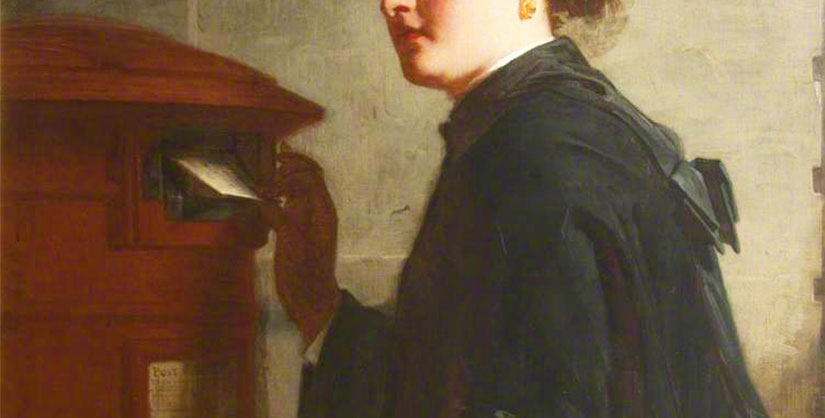Writing letters is becoming a lost art. But, in an era of “Zoom fatigue” and “doomscrolling”, receiving correspondence away from the screen can be a real delight. Why not learn from those who did it best?
Why were letters so popular in Victorian England?
Before Queen Victoria’s reign, posting letters was expensive. Further, the burden of the cost was on the recipient, as prepaying was seen as a social slur. Victoria wanted to reduce postal rates.
The prepaid postage stamp we see today was introduced in 1840. Further, The Penny Post - a system in which normal letters could be sent for a penny - made writing letters much more accessible. It revolutionised letter writing:
The Penny Post allowed Victorians to transcend geographical boundaries. Suddenly, it became possible to stay connected with friends and family despite relocation, emigration, and travel.
Here are some examples of Victorian letter etiquette you can apply to your own writing.
Quality over quantity
In How To Write Letters (1876), J. Willis Westlake advises:
‘Take pains; write as plainly and neatly as possible [...] Don’t say, I haven’t time to be so particular. Take time; or else write fewer letters and shorter ones. A neat well-worded letter of one page once a month is better than a slovenly scrawl of four pages once a week. In fact, bad letters are like store bills: the fewer and the shorter they are, the better pleased is the recipient.’
We always advocate being concise and taking care of the language you use, respecting your reader’s time. It’s encouraging to know this was a communicative value in the nineteenth century. Well before the communication technologies the twentieth century was going to bring.
Keep it human
It may surprise you to learn that the Victorians favoured more casual prose when it came to their letters. They were polite, especially by today’s standards. But, they weren’t over-the-top. You’re likely writing to a friend, so you don’t need to be stuffy or formal. The Ladies’ Book of Etiquette and Manual of Politeness (1872) recommends:
‘Letter writing is, in fact, but conversation, carried on with the pen, when distance or circumstances prevent the easier method of exchanging ideas, by spoken words. Write, therefore, as you would speak, were the person to whom your letter is addressed seated beside you.’
You’d do well to bear in mind what you’ve already learned from using Readable - there are tweaks you can make to your writing to make it more conversational. You can do this by increasing your pronouns and decreasing your prepositions.

Do a spelling and grammar check
The Victorians pulled no punches when it came to proper spelling and grammar. Letter-Writing: Its Ethics and Etiquette (1890) says:
‘Many persons do not naturally spell well, and so are obliged to keep a dictionary always at hand. Such persons should never write a word, about the proper spelling, of which they are uncertain, without looking it up. Bad spelling like bad grammar, is an offence against society.’
An ‘offence against society’ is a strong phrase, but then, who are we to argue? Hopefully, your reader isn’t too pedantic. However, for your own sake and for theirs, it’s good practice to check over your letter for any obvious mistakes.
Your sign-off is your mic-drop
According to Westlake, here are several examples of acceptable letter sign-offs:
‘Your friend; Your sincere friend; Yours with esteem; Yours very respectfully; Your loving daughter; Your affectionate father; Ever yours; Yours affectionately and forever (Jefferson); Ever, my dear Fields, faithfully yours (Dickens); Ever your affectionate friend (Dickens); Yours heartily and affectionately (Dickens); Now and always your own; Ever, my dear Mr. — , most gratefully and faithfully yours (Miss Mitford); I am, my dearest friend, most affectionately and kindly yours (John Adams to his wife); Believe me always your affectionate father (Sir Walter Scott); Yours very sincerely (Hannah Moore); Your obliged and affectionate friend (Bishop Heber); Sincerely and entirely yours.’
Some of these sign-offs are more flamboyant than others. They appear a little outdated, but they all contain warmth and affection. This, we can inject into our sign-offs. Rethink ‘kind regards’ and replace it with something with a little more heart.
With these guidelines in mind, it’s time to write your letter. The general consensus of Victorians is that white paper is the most tasteful colour, and black ink. The question is, who will you surprise with this lovely gesture?


